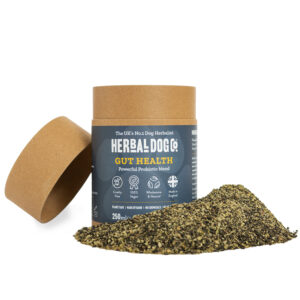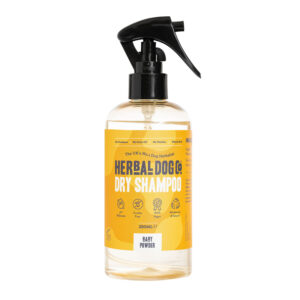Yes, natural flea preventatives are better than drug products in many ways. They are effective and have fewer side-effects on dogs and humans than their strong chemical counterparts. They are less damaging to the planet in their production and use and smell so much more pleasant!
What to do if your dog has fleas
However, if you’ve got a house and dog with a severe infestation of the little blighters, unfortunately, you’ll likely need pharmaceutical sprays, drop-ons or tablets and a lot of patience! So talk to your vet about this.
Prevention is always better than cure. No one wants to destroy the bee population or the planet, (yes this is a thing with chemical products) but at the same time no one wants fleas and ticks, so what can we do?
The science of dog fleas….
Before we get to the exciting bit, the herbs, we want to share an observation. You know how, if you’re sitting-out of a summer evening with friends, some of the group will get bitten by midges and will complain it always happens. Some of the group are the opposite. They’ll sit smugly drinking their gin and tonics telling how they’re never bitten.
The same love-hate relationship with fleas and ticks is true with dogs. Some dogs are just more attractive to insects. The most obvious example is if you take two dogs into a woods in Spring, one might be very attractive to insects, they will get covered in ticks, but the other, if they’re of the smug, ‘I never get bitten’ variety, will get few. Herbs will help both groups of dogs, but some dogs are so attractive, they may need drugs to keep them flea and tick free, unfortunately.
We have two options for fleas: products that go on the coat and those that you feed by mouth.
Herbal sprays and drops that go on the coat generally use plant extracts and essential oils to repel fleas. The list of plants that have been used to repel fleas is endless but includes Catnip, Cedar, Chamomile, Citronella, Chrysanthemums, Eucalyptus, Lemongrass, Fleabane Daisy, Fleawort, Juniper, Lavender, Marigolds, Mint (any type!), Neem, Rose Geranium, Rosemary, Rue, Sage, Sweet Bay, Tansy and Wormwood (watch the last two as they have significant toxicity).
Most dogs tolerate oils, essential oils, emulsions and hydrosols very well. If in doubt, try a small patch first before you dowse the whole dog in a new product.
There are a few herbs and supplements, which, if taken by mouth, can make the dog less attractive to fleas. They include garlic, brewer’s yeast and ginger. Of the many herbs we mentioned in the list above, the more aromatic may be able to get oils to the skin to influence flea attractivity—for example, Juniper, Lavender, Mint, Neem, Rosemary and Sage.
We can’t finish a piece on fleas without mentioning fresh food. It is the experience of vets and dog owners the world over that dogs on raw food, be they flea and tick magnets or not, all benefit from fewer insect visitors once firmly established on a proper, varied raw food diet. Herbs can enhance this naturally healthy food-dog interaction.
Our go to drop on




